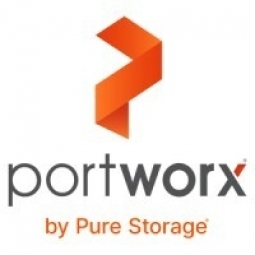Portworx

概述
公司介绍
Portworx is the Cloud Native storage company that enterprises depend on to reduce the cost and complexity of rapidly deploying containerized applications across multiple clouds and on-prem environments.

Supplier missing?
Start adding your own!
Register with your work email and create a new supplier profile for your business.
实例探究.
Case Study
GE Digital's Solution to the Stateful/Stateless Problem for Industrial IoT
GE Digital was faced with the challenge of managing storage in the rapidly evolving container technology ecosystem. The company was using Cloud Foundry, which was effective for stateless applications, but they needed a solution that could handle both stateless and stateful applications. They were looking for a solution that could provide a single infrastructure that would allow them to run both stateless and stateful applications. They also needed a solution that would support encryption and snapshotting out of the box, which are crucial for an industrial company. The challenge was to find a solution that would not only meet these requirements but also be cloud-agnostic and provide a uniform experience for their DevOps teams.
Case Study
Revolutionizing Energy Efficiency with IoT: A Case Study on Software Motor Company
Software Motor Company (SMC) was founded in 2013 with the mission to bring the benefits of the Internet of Things (IoT) to electric motors. The company developed a radically more efficient electric motor that could save enormous amounts of energy globally. However, the company faced several challenges. The electric motor industry had seen little innovation over the past 40 years, with induction motors being the standard. These motors were inefficient in terms of energy consumption and often ran at a fixed speed, consuming 100% electricity even when they only needed 20% to generate the right amount of torque. Variable frequency drive (VFD) motors managed to consume electricity more intelligently, but the components involved in VFDs were expensive, inefficient, and often broke. This forced buyers to choose between energy efficiency, upfront cost, reliability, and ongoing maintenance cost. SMC needed a solution that would address these issues and deliver multiple related benefits.
Case Study
Transforming Defense Contractor WCG Solutions with Rancher and Containers
WCG Solutions, a defense contractor based in San Diego, was facing significant challenges with their infrastructure. The company provides services for government customers, including the Navy and the Department of Defense, and is involved in building and maintaining a suite of web-based collaboration tools. These tools are designed to facilitate communication across research and development organizations within the government. However, the company was struggling with the overwhelming technical debt of poor configuration management. This led to issues such as not knowing which deployments were configured in which way, making updates very difficult. Additionally, the company was dealing with the problem of having to rely on configuration management at the system level, which was not efficient or effective. The company was also facing challenges when it came to deploying stateful services in containers. Most of their services required persistence, and the push towards immutable infrastructure made it difficult to ensure that no one host was critical to their infrastructure.
Case Study
Pyvotal Solutions: Enhancing Platform Reliability and Cost-Efficiency with Containers
Pyvotal Solutions, a cloud-based infrastructure and platform services company, was faced with the challenge of building platform solutions for cost-conscious, yet demanding customers. The company needed to provide a reliable, high-performance platform using fewer resources. The majority of their customers required a complete managed solution for their applications, such as e-commerce sites, without wanting to manage the infrastructure or the CMS. Additionally, they needed a solution that was agile and cost-effective. Traditional virtual machines were not efficient as they required a dedicated resource per application, leading to underutilization of resources during certain times of the day. Furthermore, the company faced challenges in running stateful services on containers, particularly in managing persistent storage.





